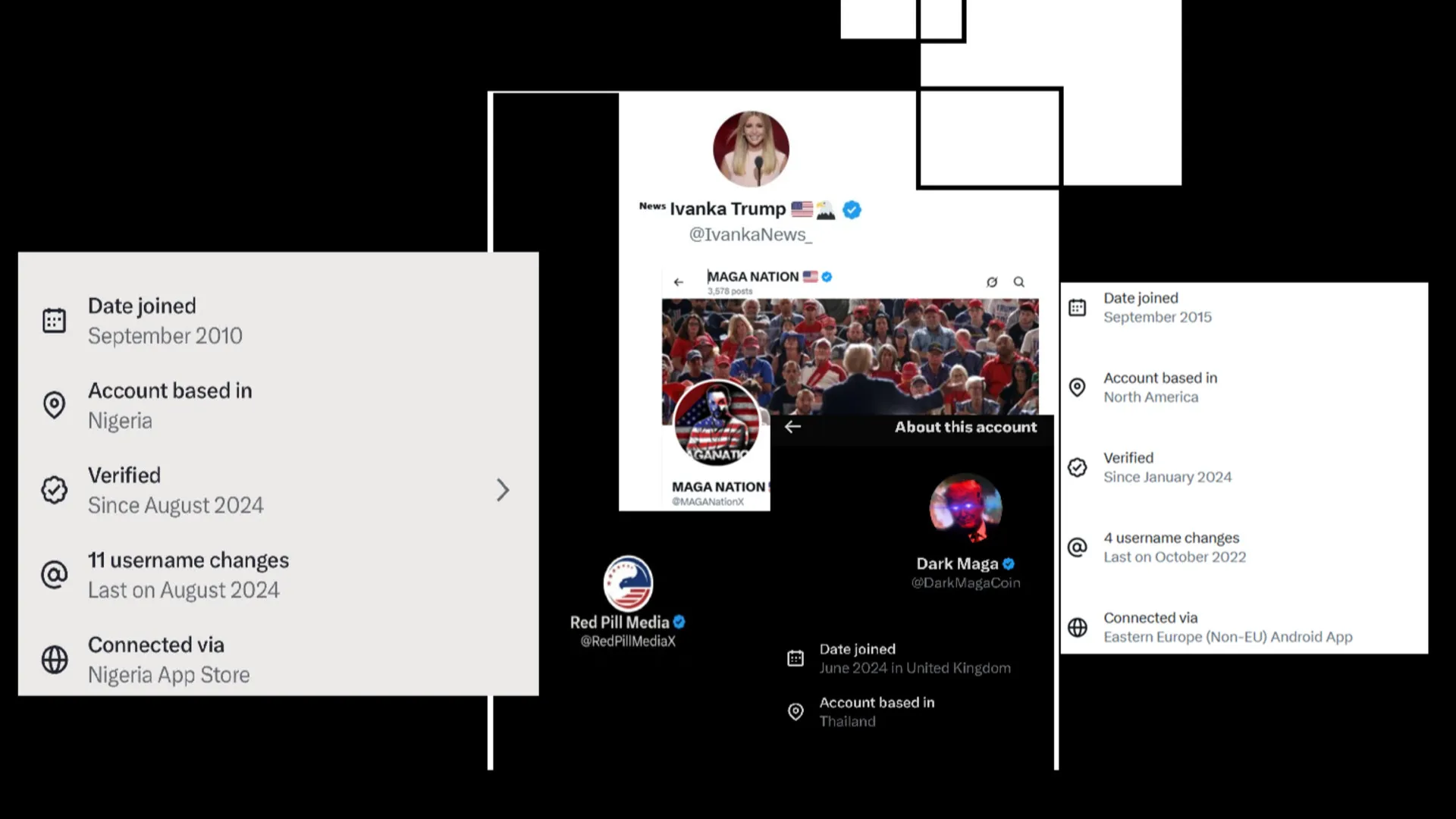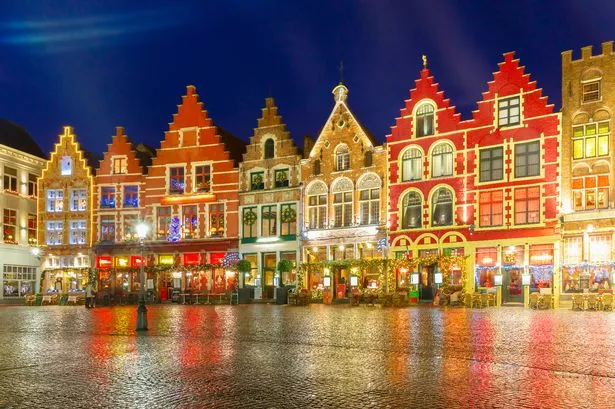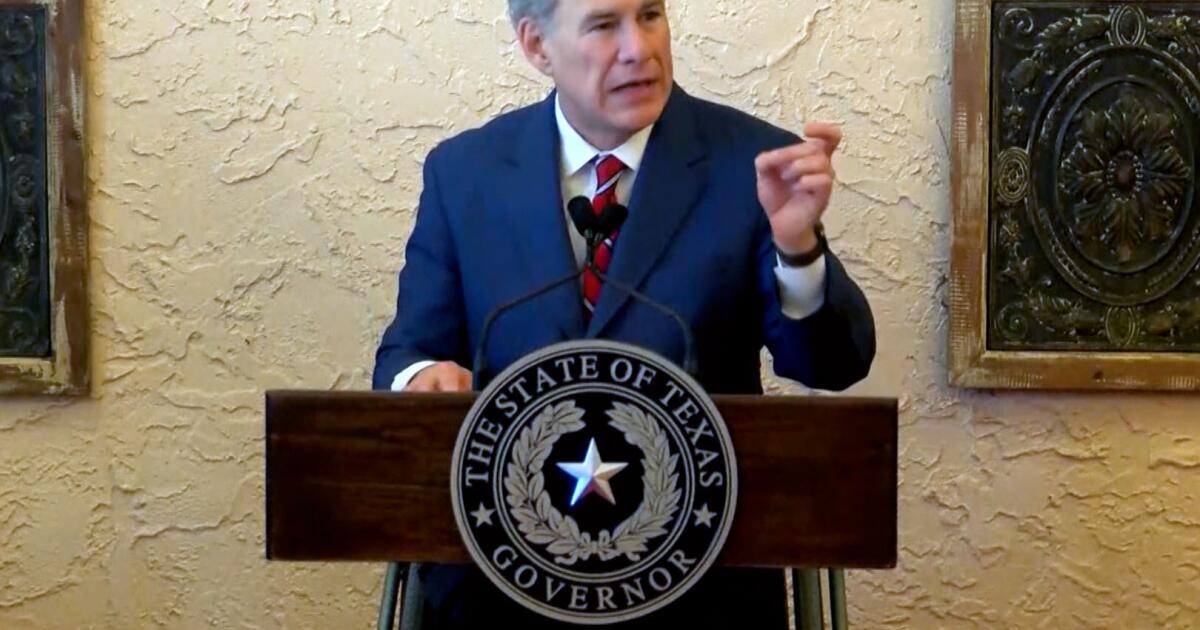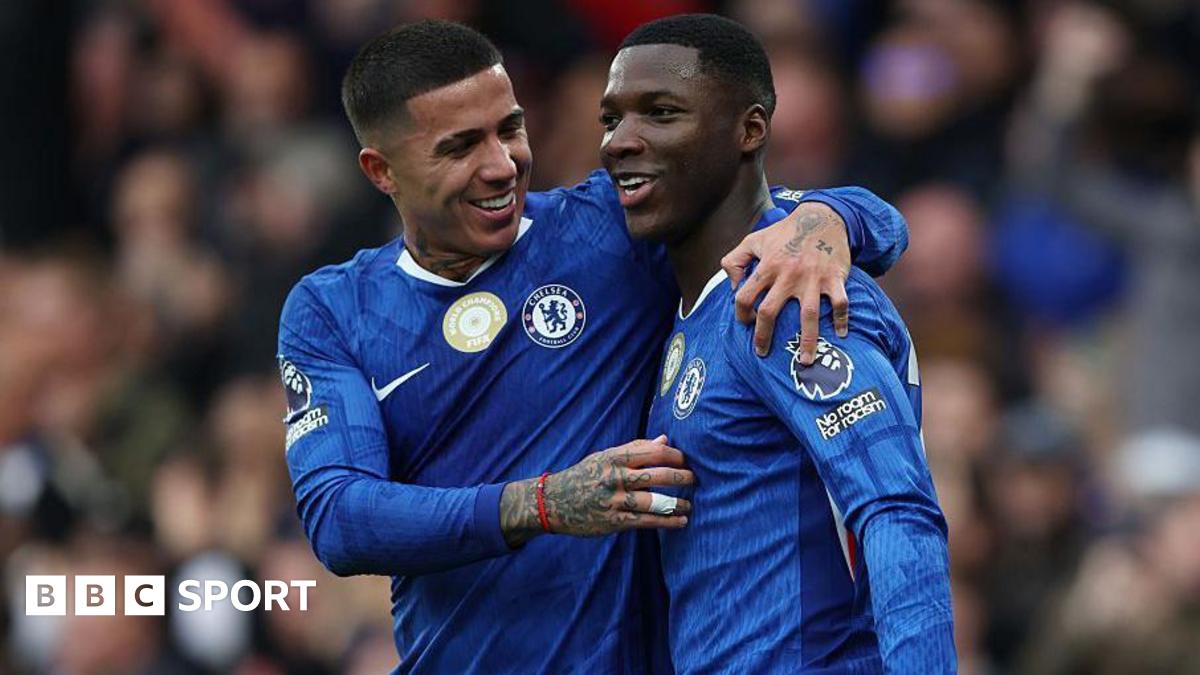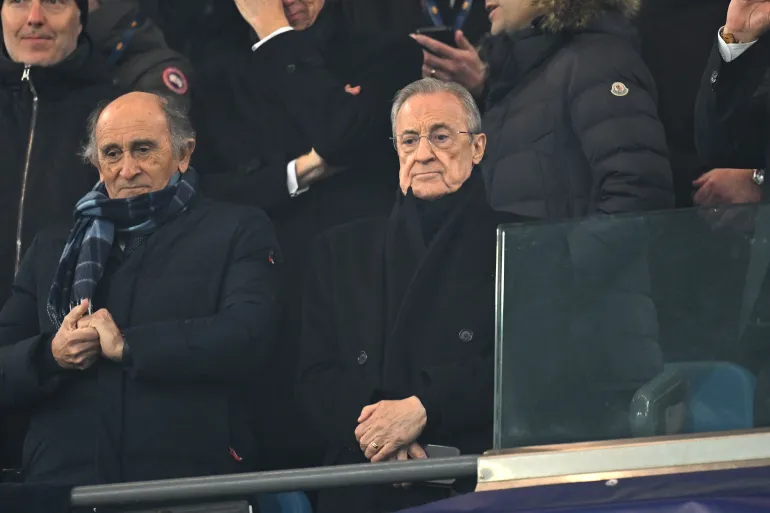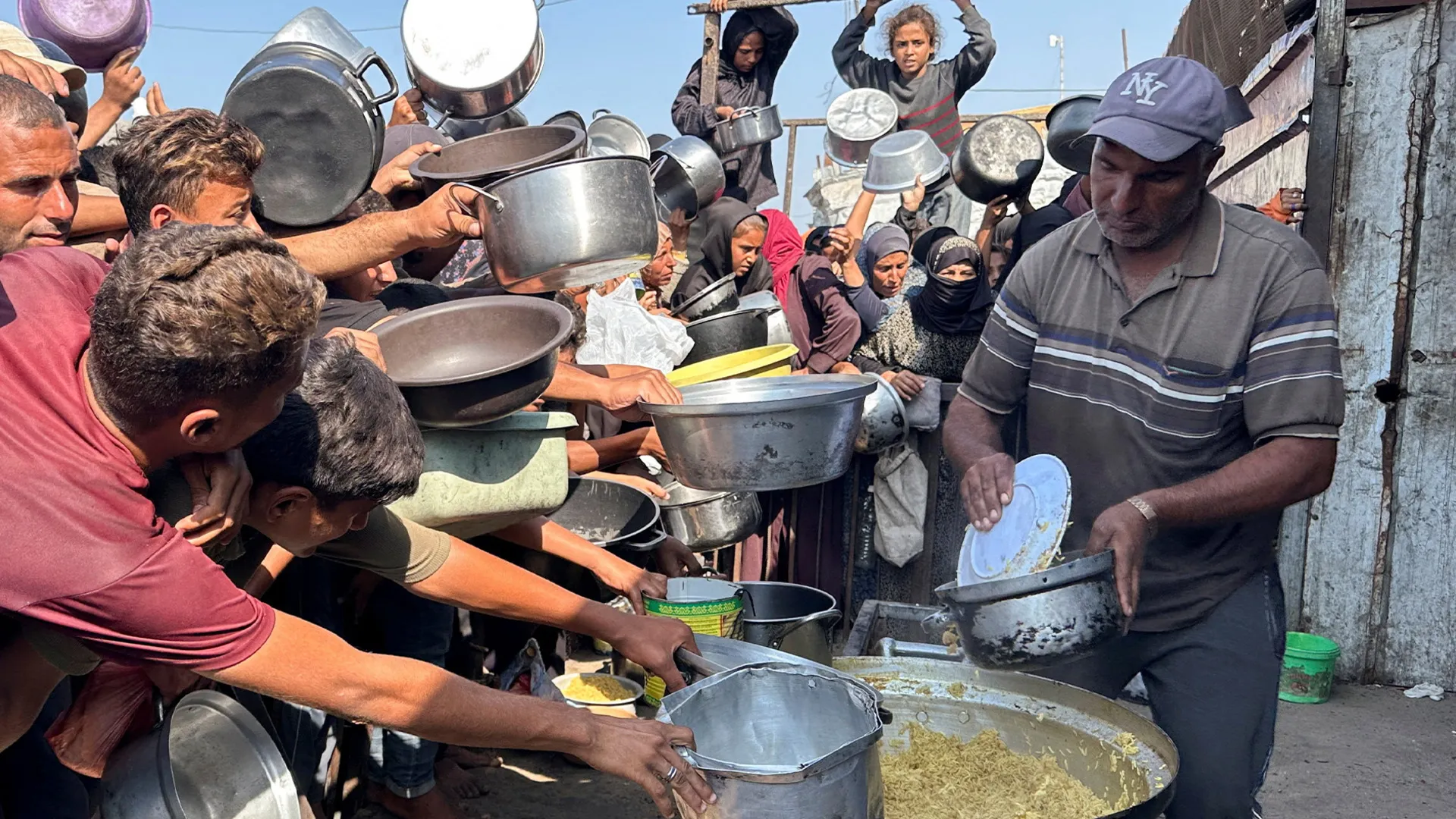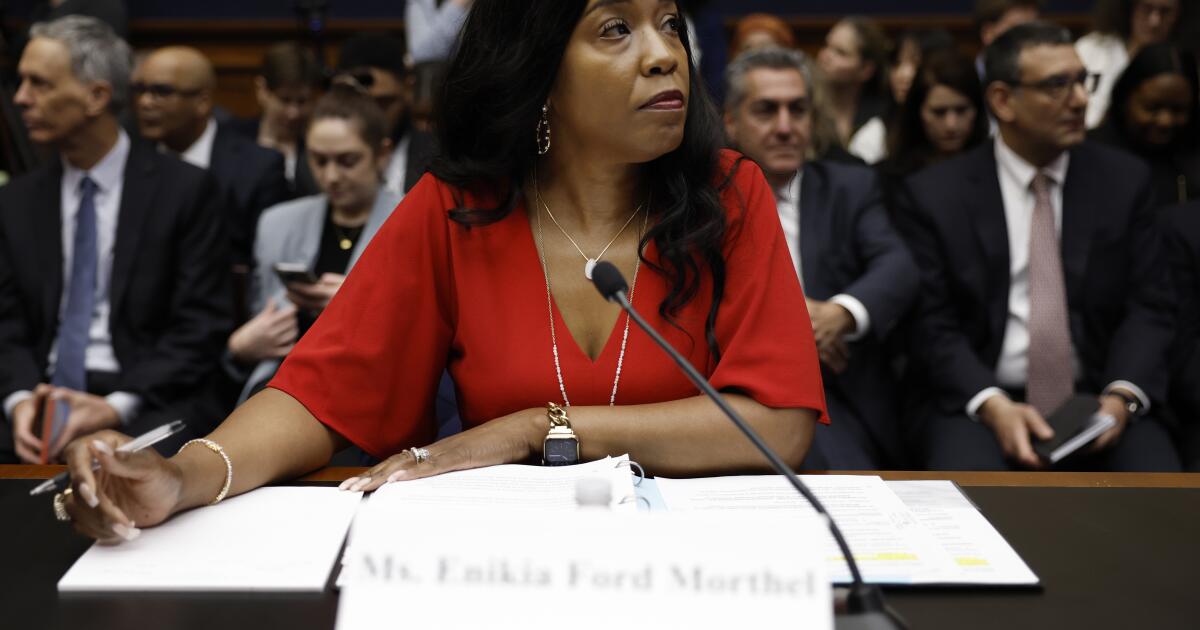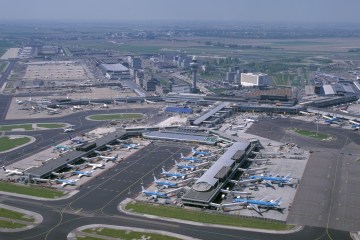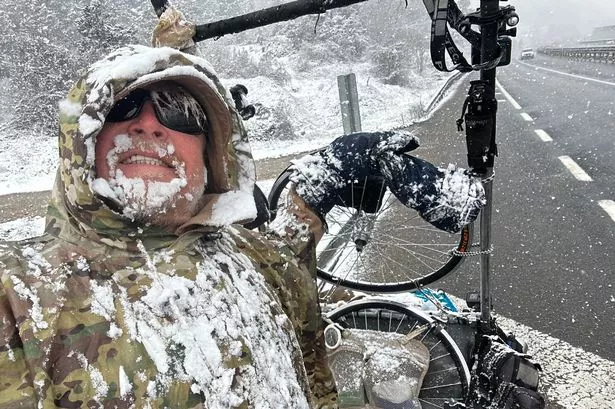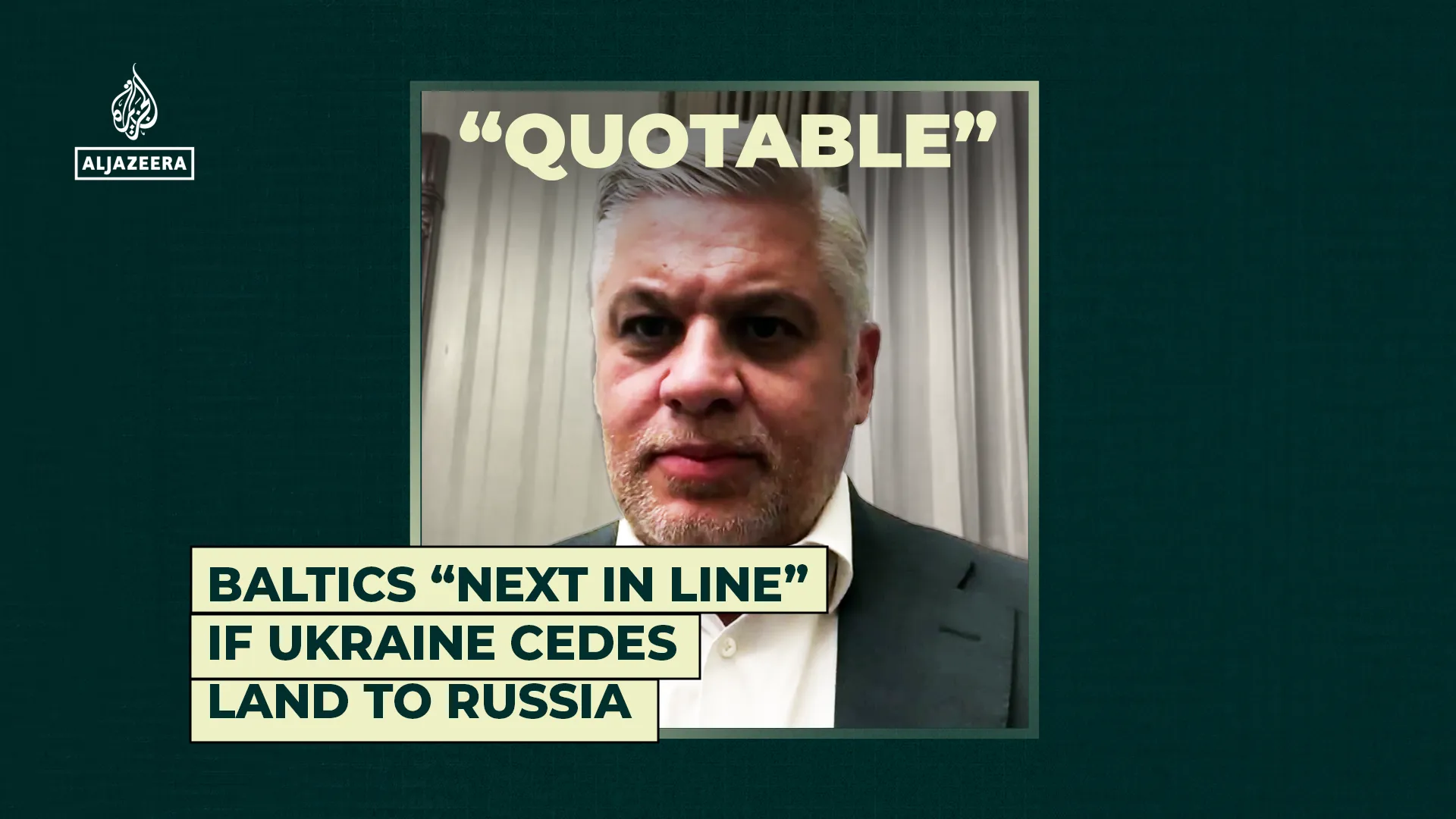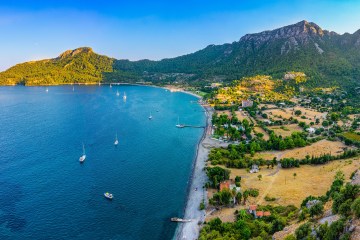Underrated UK town surrounded by waterfalls is perfect for Christmas shopping
A charming town that’s perfect for a weekend break, with independent shops, great places to eat and drink, and stunning hikes on its doorstep
As the festive season approaches, you might be meticulously planning your shopping trips. However, your local high street may not fit the bill.
If you fancy a change of scenery this December, a staycation in one Welsh town could offer the perfect blend of exploration and independent boutiques. One destination that might not have sprung to mind is tucked away deep within Rhondda, South Wales.
Treorchy and its bustling high street are ideal for a relaxed Saturday morning stroll, perusing the many independent shops, with the rest of the day free for dining, drinking or, weather permitting, a post-lunch ramble around the nearby hills and waterfalls.
Shops
The true allure of Treorchy lies in its quaint independent shops, where you’ll discover gifts and stocking fillers galore. At the top of Bute Street, there’s the florist, Lili Wen, where – alongside beautiful bouquets and wreaths – you’ll find homely yet chic housewares and trinkets, reports the Express.
For those who relish rummaging through trinkets and gifts, Wonder Stuff is a must-visit. This delightful gift shop has been trading for over two decades, selling adorable stationery, mugs, cards, and food and drink gifts.
Just a few doors down, Green Valley may seem like a simple fruit and veg shop – and it is – but it also stocks sustainable gifts, a variety of hot sauces, Christmas items, treats and, intriguingly, cosy Nordic socks.
Beyond The Lion pub, two unique shopping experiences await. Sparkilicious is a haven of chic gifts and homeware, puzzles, games and toys.
Just across the road, Celtic Dragon Retro presents a different kind of treasure chest, brimming with retro game consoles and games, collectable toys and comics. You’ll discover everything from Pokémon and WWE, Star Wars, Marvel and DC to Disney.
They even offer gaming tables for a breather during your shopping spree! Treorchy’s high street also features an array of clothing shops, baby stores, drapers and jewellery shops worth a visit.
Places to eat and drink
Treorchy is teeming with coffee shops and snack spots, such as Hot Gossip, which is currently offering a large festive drinks menu.
The Cwm Farm Shop serves up a hearty breakfast, Sunday roast, homemade pies and pasties, and daily specials. Their cawl is particularly commendable, and many of the dishes use locally-sourced meat from the nearby farm owned by the same family.
For dinner, the Pencelli Hotel offers a full menu of pub classics, tapas items, curries and flatbreads. Alternatively, you can enjoy a pub meal or pizza at the Cardiff Arms Bistro, with dishes like beef short rib, grilled monkfish and prawn curry.
Christmas attractions
Treorchy is one of many towns in Rhondda Cynon Taf that hosts a Christmas celebration. This year, the parade will commence on Saturday, November 29.
Treorchy Library is set to spread some festive cheer with Santa Saturdays every weekend in December, where kids can meet Father Christmas in his grotto. Plus, late-night shopping will kick off on 3rd December and continue every Wednesday throughout the month.
For those who fancy a bit of an adventure, the upper Rhondda offers stunning views and invigorating hikes. Just take a drive up to the Bwlch hilltop for a breathtaking view over Treorchy and Cwmparc, or head to the top of the valley to the Rhigos viewpoint for a glimpse of Bannau Brycheiniog on a clear day.
One hike that’s a must for walkers is the Blwch mountain circular, a 13km stretch from Treorchy up to the viewpoint. And if you’re visiting from out of town, The Pencelli and Cardiff Arms Bistro both offer cosy accommodation options.
Shooters shoot: How the Lakers are handling their early three-point slump
Welcome back to the Lakers newsletter, where we got plenty of rest while the team played pickleball.
A rare four-day stretch without a game may have done wonders for the Lakers’ small nagging injuries, but it interrupted the team’s rhythm going into Sunday’s game against the Utah Jazz. It showed in the clunky win in which the Lakers missed 28 three-point tries and let an 11-point fourth-quarter lead dwindle to one.
Despite being quite literally one of the worst shooting teams in the league, the Lakers are still 12-4. Players credited the team’s resiliency and chemistry as reasons the Lakers are still winning, but how long can this team survive on pure vibes?
Don’t stop believing
Luka Doncic’s shot trickled over the front of the rim, bounced high above the basket and swished through the net. When the three-pointer finally fell, Doncic raised both arms in equal parts disbelief and relief.
He’s the NBA’s leading scorer, but Doncic is shooting a career-worst 31.1% from three on a career-high 11 three-point attempts per game. Austin Reaves, also enjoying a career season offensively, is shooting the same poor percentage from three-point range.
Almost every Lakers rotation player is shooting below his career average from three-point range through 16 games this season. Shooting 33.3% from three, the Lakers are 26th out of 30 teams. Their 10.9 makes a game are the fewest in the league.
“We’ve got to shoot the ball better,” coach JJ Redick said after the Lakers survived a comeback attempt against the Jazz on Sunday. “But it’s got to be a belief in each other and a belief in ourselves to knock down shots.”
Nearing the 20-game mark of the season, the Lakers are not fretting about their frigid outside shooting. Redick recalled how the Lakers shot 34.8% from three in the first two months of last season. Then after shooting 46.7% in a two-point loss to the Detroit Pistons on Dec. 23, the Lakers made 37.7% of their threes for the rest of the regular season.
Part of the shift came after the trade that brought Doncic. He shot 37.9% from three while with the Lakers last season, and the team’s overall three-point attempts increased from 33.8 per game to 40.4 in the final two months of the season.
The Lakers are taking 32.4 three-pointers per game this season. Redick anticipated that the number would rise, but with the current shooting struggles, he wanted to focus more on simply maximizing what his players do well.
“We’re going to do the things that put our guys in a position to create advantages and generate good offense,” Redick said before Sunday’s game. “However that looks as it morphs and evolves throughout the year, that’s just going to be what it is, the philosophy behind it. And if it ends up being we shoot 40 threes a game, great.”
Redick celebrated the team’s otherwise effective offense that is second in true shooting percentage (61.5%) and first in points per shot (1.42). The other glaring issue is turnover percentage, where the Lakers rank 28th.
“If we were out there not creating great looks or we were not playing [the right way] and we were playing selfish basketball [it would be different],” said LeBron James, who has made two of seven shots from three in his two games since returning from sciatica. “That’s not our M.O. So you look at over half of the threes that we missed tonight, a lot of them were wide open, but a lot of them were just finding the right player. The ball has so much energy in it that we’re not worried about that.”
Of their 38 three-point attempts against the Jazz, 25 came with the closest defender six or more feet away. The Lakers made just six of those open shots, with Doncic, Reaves and Marcus Smart going four for 17.
“We’re definitely gonna shoot better,” Smart said. “We work too hard not to.”
What’s up with the NBA Cup?
Even Deandre Ayton didn’t know what was going on with the NBA Cup. The Lakers center absorbed a turnover late in a blowout against the New Orleans Pelicans on Nov. 14 instead of taking an easy shot. When he heard his teammates screaming at him to shoot, he admitted later he didn’t realize the potential importance of those two points.
Ayton instead intertwined his middle and ring fingers and held his right hand up toward the bench. The ‘W’ is all that mattered.
Entering the final week of NBA Cup group play, the Lakers need just one more W to clinch their spot in the quarterfinals. The winner of Tuesday’s game between the Lakers and Clippers at Crypto.com Arena officially claims West Group B.
The Lakers and Clippers are 2-0 in group play with two games remaining. The group also includes the Memphis Grizzlies, the Dallas Mavericks and the already eliminated New Orleans Pelicans. The Lakers finish group play with the Dallas Mavericks on Friday in a game that, even if the Lakers clinch the top spot Tuesday, could still matter.
The three group winners advance to the quarterfinals, and the top second-place team from each conference earns a wild card. The two teams with the best group play record in each conference will host the quarterfinal games. The No. 1 seed goes to the team with the best overall record, and if the records are even, then point differential will be the first tiebreaker for seeding.
Oklahoma City is also 2-0 halfway through group play and has a league-best plus-63 point differential, putting the Thunder in position to earn the No. 1 seed in the West quarterfinals.
The Lakers have a plus-19 point differential in group games and are in position to be the second-seeded team in the West, possibly playing against the West Group C winner.
The third group in the West is one of the most competitive in the league as Portland and Denver entered this week tied with 2-1 records. Portland has the first-priority head-to-head tiebreaker against the Nuggets, but Denver has a plus-26 point differential that positions it well as a potential wild-card team.
Top-seeded teams will host the quarterfinal games on Dec. 9 and 10. The losing teams in each conference’s quarterfinals will play each other in a regular season game on one of four dates: Dec. 11, 12, 14 or 15. The semifinals are in Las Vegas on Dec. 13, and the final will be on Dec. 16.
On tap
Records and stats updated entering Monday’s games
Nov. 25 vs. Clippers (5-12), 8 p.m., NBA Cup group play
Kawhi Leonard returned to the lineup on Sunday against the Cleveland Cavaliers, scoring 20 points, but he couldn’t rescue the Clippers, who have just two wins in November,
Nov. 28 vs. Mavericks (5-13), 7 p.m., NBA Cup group play
Stop me if you’ve heard this before: Anthony Davis is injured. After missing his return to L.A. last year because of an abdominal strain, the former Lakers’ star has been sidelined for almost a month with a calf injury, potentially delaying his much-anticipated first game in L.A. since the infamous trade.
Nov. 30 vs. Pelicans (2-15), 6:30 p.m.
The Pelicans took a big swing to draft Derik Queen in the first round last April and the former Maryland star is starting to show some signs of promise. Queen averaged 23.3 points and 8.3 rebounds in three games against Atlanta, Dallas and Denver. He added 11 assists in a 118-115 loss to the Mavericks that eliminated New Orleans from NBA Cup contention.
Dec. 1 vs. Suns (11-6), 7 p.m.
Losing Kevin Durant to free agency made it seem like Devin Booker and Phoenix would be in rebuild mode, but they’re in the thick of the West. Booker leads the team with 26.9 points and 7.1 assists per game.
Best thing I ate this week

Thit nuong
(Thuc Nhi Nguyen / Los Angeles Times)
While the Lakers played pickleball, I was soaking up my extended home time with loved ones. One of my easy crowd pleasers is thit nuong, which is Vietnamese grilled pork. Slices of pork shoulder are marinated with garlic, shallots, lemongrass, soy sauce, fish sauce, sugar and oyster sauce, threaded onto skewers and grilled. (I, however, don’t have a grill so I bake mine on a rack in the oven.) They’re a great finger food eaten off the skewer or as a meal with rice or, in this case, rice noodles. And it’s not Vietnamese if there aren’t pickled carrots and daikon.
My dad once told me my thit nuong was better than my mom’s. It is my greatest culinary accomplishment.
In case you missed it
‘Legend’: Claire Rothman, Forum president during Lakers’ ‘Showtime’ dynasty, dies at 97
Luka Doncic helps Lakers hold off Jazz for fourth win in a row
LeBron James’ return has Marcus Smart becoming Lakers’ ‘Swiss Army knife’
Dodgers boss Andrew Friedman part of team to advise Lakers in ownership transition
Lakers fire executives Joey and Jesse Buss and members of scouting staff
Hernández: LeBron James’ ‘very unselfish’ play shows he can fit in. Will it continue?
‘The dude’s a machine’: Three takeaways from LeBron James’ return to the Lakers
Until next time…
As always, pass along your thoughts to me at thucnhi.nguyen@latimes.com, and please consider subscribing if you like our work!
Did X unwittingly unmask top MAGA influencers as foreign trolls? | Donald Trump
A new transparency feature on X has unwittingly revealed that many of the site’s top MAGA influencers are foreign actors sowing division in the US. It’s caused a storm on social media, as Soraya Lennie explains.
Published On 25 Nov 2025
Fairytale Christmas market in enchanting medieval city is just three hours from the UK
There is a catalogue of Christmas markets dotted across Europe for a festive getaway, with one transforming the city into a magical winter wonderland just a few hours away.
With Christmas just a month away, many of us are turning our attention to celebrating the festivities, and what better way than a stroll around a European market with a warming cup of spiced mulled wine.
One particular Christmas market, set against a backdrop of fairytale charm and medieval architecture, is merely hours away from the UK.
Bruges Christmas market is one of the most notable in Belgium, if not Europe, as the city transforms into a spectacular scene with Christmas trees, colourful fairy lights and charming wooden chalets.
The celebrations, also known as the “Winter Glow”, also welcome its glittering ice skating rink and a mesmerising light experience trail through the city.
Nestled in the heart of the city centre, the Christmas market will span over two locations, each area offering its own festive ambience.
In Grote Markt, you’ll find traditional wooden chalets adorned with gift inspiration, from handcrafted ornaments to Belgian chocolates, as well as an ice rink for gliding among the enchanting backdrop.
Another part of the Christmas market, albeit a little smaller, is in Simon Stevinplein, with a focus on “short-chain and craft products”.
Nearby, you’ll find cobbled streets with cosy cafés, where you can experience the scent of local chocolatiers while taking in the Gothic architecture of this well-preserved city.
You certainly won’t go hungry at the Christmas market with Belgian treats like fresh waffles and cheeses on offer, or a spiced mulled wine or traditional beer at the “IJsgloed” Winter Bar that overlooks the ice skating rink.
The bar is adorned with lights, decorations, wooden barstools, and barrels, creating a snug haven to soak up the festive scenes.
During a trip, you can also wander along the 3.5km light trail through the historic city to admire 10 fascinating light installations set within unsuspecting venues.
While Bruges is small, the intimate atmosphere and magical setting of “Winter Glow” that envelops the city, from November 21 to January 4, make it one of the most charming in Europe.
Furthermore, you can climb the 366 steps of the iconic 83-meter-high Belfry of Bruges (Belfort van Brugge) and be rewarded with panoramic views of the city.
You can also take a brisk walk along its winding canals through the city, often dubbed the “Venice of the North”, or wander through Minnewaterpark with its tranquil lake and serene surroundings.
What’s more, you can catch the Eurostar from London St Pancras International to Brussels Midi/Zuid in under two hours, before a quick hour train to Bruges, making it super easy for a winter getaway.
Or why not extend your trip and experience both Belgian cities for a festive trip like no other?
Afghanistan-Pakistan Tensions Spike Amid Border Attacks and Militancy
Tensions between Afghanistan and Pakistan escalated on Tuesday after the Taliban accused Pakistani forces of air strikes in eastern Afghanistan that killed nine children and a woman. Islamabad has not commented. The bombardments follow a series of recent attacks in Pakistan, which Islamabad attributes to militants operating from Afghan soil. Last month saw the deadliest confrontation between the two neighbors since the Taliban seized power in 2021, with dozens killed in air strikes and ground clashes along the 2,600 km (1,600-mile) border.
Accusations and Counter-Accusations
Pakistan claims that militants, particularly the Tehreek-e-Taliban Pakistan (TTP), are based in Afghanistan and launch attacks into its territory. Recent high-profile attacks include a suicide bombing in Islamabad that killed 12 civilians and bombings targeting paramilitary forces in Peshawar and Waziristan.
The Taliban administration denies sheltering Pakistani militants and says it does not permit Afghan soil to be used for attacks against other nations. A ceasefire signed in Doha in October collapsed after Kabul refused to provide written guarantees against militant activities, leaving Pakistan frustrated.
Who Are the Pakistani Taliban (TTP)?
Formed in 2007, the TTP is a jihadist organization based primarily in northwest Pakistan, drawing ideological inspiration from al-Qaeda. While historically allied with the Afghan Taliban, the TTP has carried out major attacks on markets, schools, military bases, and security forces in Pakistan. Despite repeated military campaigns, Pakistan has struggled to eliminate the group completely.
After the Taliban Took Power in Afghanistan
Initially welcomed by Pakistan in 2021, the Taliban’s return to power has not reduced cross-border threats. Islamabad accuses Afghanistan of harboring TTP fighters and Baloch insurgents seeking independence in western Pakistan. Pakistan also alleges that India is supporting these groups through Afghanistan a claim New Delhi denies.
Implications for the Region and the World
The renewed Afghanistan-Pakistan tensions threaten regional stability in South Asia. Persistent cross-border militancy could destabilize both nations, strain relations with neighboring India, and potentially create a vacuum for other extremist groups. Global powers, including the U.S., China, and the EU, face challenges in balancing security cooperation, counterterrorism efforts, and humanitarian concerns in a region critical for trade, energy routes, and counterterrorism strategy.
Analysis
This situation highlights how state fragility and ungoverned spaces fuel persistent conflict. Pakistan’s security concerns are genuine, but unilateral strikes risk escalating violence and civilian casualties. Meanwhile, the Taliban in Kabul faces the difficult task of balancing governance, legitimacy, and regional diplomacy while being accused of harboring militants. Globally, the crisis underscores the fragility of peace in border regions where militant groups exploit political and geographic fault lines, showing that even well-intentioned interventions can have unintended consequences if not coordinated carefully.
With information from Reuters.
Robert Therrien’s retrospective at the Broad is grand, charismatic
A giant stack of dishes from the kitchen, a disembodied array of Daffy-like duckbills, an angry storm cloud of old rotary dial telephones embedded in tangled cords — Robert Therrien’s art covers a lot of varied territory.
Whether he was making a 3D sculpture to stand on the floor, a 2D painting to hang on the wall, or a 3D sculpture attached to a wall like an ancient frieze, he managed the same uncanny result — objects where the purely visual and the utterly physical demand equal time.
At the Broad, “Robert Therrien: This Is a Story” concludes 2025 with one of the year’s best museum solo shows. A smashing retrospective of a seemingly sui generis artist — Therrien died at 71 in 2019 — he takes a prominent place among a number of distinctive painters and sculptors since the 1960s and 1970s in L.A. that don’t seem to fit comfortably within larger categories. Two of them — Vija Celmins and Ed Ruscha — have contributed concise reflections on Therrien’s work to the lovely, insightful catalog that accompanies the show.
These days, art emphasizing subject matter often shunts form to the side, as if the visual analysis that form demands is irrelevant. With Therrien, it’s essential. Students at L.A.’s numerous celebrated art schools would benefit from spending time in the exhibition.
This art’s simultaneous appeal to the eye and the hand, formally lean and visually uncluttered, yields a strangely conceptual punch. A sense of charismatic presence — the material manifestation of an abstract idea — is inescapable.

Robert Therrien, “No title (red chapel relief),” 1991, enamel on paper and wood
(Christopher Knight / Los Angeles Times)
Start with “No title (red chapel relief)” from 1991. The simple contour of a chapel, its steeple slightly off-center, stands out from the wall about six inches deep. The simplified shape is the kind you might see on a Christmas card or a stamp.
A bit over nine feet high, and hung more than a foot off the floor, the object suggests architectural scale without sacrificing an element of intimacy, which invites a viewer to engage in close examination. Up close, the bright crimson relief-sculpture is revealed to feature hand-brushed red enamel paint over paper.
Visible most clearly in folds at the corners, the paper is carefully affixed to the surface of a wooden form. Step back, and suddenly the off-centered steeple rising from the boxy form below looks familiar in a very different way: Make a fist, raise your middle finger, and the off-centered contour of your hand repeats the shape hanging on the wall.
The church seems to be giving you the finger back.
The recognition of a sculpture surreptitiously flipping the bird certainly produces a smile. Soon, though, the wisecrack gives way to more sober ruminations. Every artist is expected to either shake off or renovate convention. Therrien’s generic chapel stands not for any particular denomination or specific religious creed, but simply for the common reality of established doctrine operating throughout daily life. That’s what gets the finger.
Therrien isn’t insulting religion. Raised Catholic but long-since lapsed, he instead harnesses an emphatic merger of physical form and fluid red color to conjure a wholly secular vision of the body and the blood.

Studies for Robert Therrien’s sculptures are included in the Broad retrospective.
(Christopher Knight / Los Angeles Times)
Broad curator Ed Schad notes in his catalog essay that Therrien made 57 different chapels over more than three decades. He employed a wide range of materials in them — wood, bronze, steel, aluminum, brass, cardboard, paper, canvas, plastic, vellum, photogravure and wallboard. That’s typical of the curiosity with which he investigated the visual appeal of art’s physical potential, which he began in the mid-1970s by pouring resin into a puddle on an asphalt floor, letting it dry, then pulling up the pockmarked pancake and simply pinning it to the wall.
Therrien’s exploratory, artistic bird-flipping isn’t parody, like German artist Anselm Kiefer’s prickly self-portrait photographs raising a Hitler salute in front of ruined landscapes. It’s more like Chinese artist Ai Weiwei’s “Study of Perspective” series of photographs, where his outstretched hand raises a middle finger aimed toward symbolic power centers — the White House, Tiananmen Square, the Eiffel Tower, the Reichstag, etc. Notably, however, Therrien’s digital rumination on the hazards embedded within unquestioning cultures preceded his fellow artist’s by more than a decade. The sensuous material breadth of his work also kept redundancy at bay, unlike Ai’s ultimately repetitive photographic gestures.
The Broad has 18 Therrien works in its collection, while the Museum of Contemporary Art across the street has 17. The common denominator between them was the early enthusiasm of prolific Italian collectors Giuseppe and Giovanna Panza di Biumo, donors to MOCA and friends of Edythe and Eli Broad; they were also instrumental in introducing Therrien’s work in Europe. Twenty-five of the exhibition’s more than 120 works come from the two neighboring institutions, while the rest are loans gathered from the artist’s estate and museum and private collections.
Upstairs in the Broad’s permanent collection galleries is Therrien’s 1994 “Under the Table,” an Instagram favorite that’s an almost exact replica of his studio’s kitchen table, surrounded by six sturdy wooden chairs. The difference: All are enlarged so that the ensemble is nearly 10 feet tall and 26 feet long. Downstairs in the exhibition galleries is his related sculpture of a folding card-table and four metal chairs, rendered in not dissimilar Brobdingnagian proportions. You’re invited to play underneath, like you’re 6.

Robert Therrien, “No title (folding table and chairs, dark brown),” 2007, mixed media
(Joshua White / The Broad)
These tables are not merely big. Instead, they are carefully calibrated to be large enough to allow a viewer to mentally return to childhood, when playing under a table where the grown-ups sat was a common kid thing, without being so large as to overwhelm a vaporous memory. Each viewer’s recollection is summoned and given autonomy.
Weirdly — which is to say, in typical Therrien manner — the tables and chairs are not unlike those bird-flipping chapels. In both, a universalized norm gets displayed, yet it’s simultaneously individualized. A chapel and a table are entirely different subjects, but the precision of the form propels the content of each.
That explains his art’s titles — or, to be precise, his decision early on to affix each sculpture and painting with the words, “No title.” The casual word “untitled” was pretty common in art, but it possesses an air of disinterest that seems anathema in the vicinity of a Therrien. “No title” carries the weight of a decision having been made. He doesn’t want to get in your perception’s way. It’s followed by parentheses that hold plain descriptions — red chapel relief; oil can; or, folding table and chairs, dark brown.
The formal brilliance of Therrien’s art is everywhere on view. He made exquisite, hand-rubbed wooden keystones, each representing the central stone at the summit of an arch. A keystone’s angled downward pressure on each side locks the larger form in place, paradoxically allowing the arch to rise up.
Some of Therrien’s keystones hang at eye level on the wall, inviting close perusal. Others stand upright on the floor, corresponding to your body. The sculptures lovingly sanctify a keystone’s rational but enigmatic contradiction of mechanics and function.

Robert Therrien’s beard sculptures recall the Romanian sculptor Constantin Brancusi.
(Joshua White / The Broad)
A nearly eight-foot stack of 26 enlarged white ceramic plates, which derive from dinnerware the artist found in a shop, stands as a mind-boggling pillar. Made from sleek ceramic epoxy over fiberglass, the stacked dishes are piled tilting this way and that. Walk around it, and the shifting, light-reflective and -absorbent white forms create an uncanny illusion of the pillar in jumpy, unstable motion. It’s like stumbling into an old Max Fleischer cartoon that has come to life.
Perhaps the strangest sculptures in the show are a selection of flowing beards, symbol of maturity and wisdom, which derive from the long, lavish one the great Romanian sculptor Constantin Brancusi sported. Born in the 19th century, Brancusi made his career in 20th century Paris, his work the epitome of Modernist abstraction. Therrien’s beards — fashioned from synthetic hair, plaster, stainless steel or aluminum — hang on wardrobe stands from hooks that would go over the wearer’s ears as part of a costume.
Some beards are big enough for a giant, befitting Brancusi’s outsize artistic reputation. Others are doll-sized, perfect for a modern celebrity souvenir, like Barbie’s Ken. Like ancient Egyptian pharaohs who wore false beards to signify their connection to Osiris, god of the underworld, or criminals wishing to alter their appearance to avoid the cops, we are challenged by sculptures representing the power of artifice.
“What is real is not the external form, but the essence of things,” Brancusi famously said. So, ever the unconventional philosopher, Therrien made real false beards that embody the essence of that. Form and content, the visual and the physical, create art’s spellbinding double helix. Think of these eccentric beards as Therrien’s self-portraits.
“Robert Therrien: This Is a Story”
Where: The Broad, 221 S. Grand Ave., Los Angeles
When: Tuesday, Wednesday and Friday, 11 a.m.-5 p.m.; Thursday, 11 a.m.-8 p.m.; Saturday and Sunday, 10 a.m.-6 p.m.; Closed Monday. Through April 5, 2026
Price: $19 adults, $12 students, free for children; free Thursday evenings 5-8 p.m.
Info: (213) 232-6200, www.thebroad.org
In Texas case, it’s politics vs. race at the Supreme Court
WASHINGTON — The Texas redistricting case now before the Supreme Court turns on a question that often divides judges: Were the voting districts drawn based on politics, or race?
The answer, likely to come in a few days, could shift five congressional seats and tip political control of the House of Representatives after next year’s midterm elections.
Justice Samuel A. Alito, who oversees appeals from Texas, put a temporary hold on a judicial ruling that branded the newly drawn Texas voting map a “racial gerrymander.”
The state’s lawyers asked for a decision by Monday, noting that candidates have a Dec. 8 deadline to file for election.
They said the judges violated the so-called Purcell principle by making major changes in the election map “midway through the candidate filing period,” and that alone calls for blocking it.
Texas Republicans have reason to be confident the court’s conservative majority will side with them.
“We start with a presumption that the legislature acted in good faith,” Alito wrote for a 6-3 majority last year in a South Carolina case.
That state’s Republican lawmakers had moved tens of thousands of Black voters in or out of newly drawn congressional districts and said they did so not because of their race but because they were likely to vote as Democrats.
In 2019, the conservatives upheld partisan gerrymandering by a 5-4 vote, ruling that drawing election districts is a “political question” left to states and their lawmakers, not judges.
All the justices — conservative and liberal — say drawing districts based on the race of the voters violates the Constitution and its ban on racial discrimination. But the conservatives say it’s hard to separate race from politics.
They also looked poised to restrict the reach of the Voting Rights Act in a pending case from Louisiana.
For decades, the civil rights law has sometimes required states to draw one or more districts that would give Black or Latino voters a fair chance to “elect representatives of their choice.”
The Trump administration joined in support of Louisiana’s Republicans in October and claimed the voting rights law has been “deployed as a form of electoral race-based affirmative action” that should be ended.
If so, election law experts warned that Republican-led states across the South could erase the districts of more than a dozen Black Democrats who serve in Congress.
The Texas mid-decade redistricting case did not look to trigger a major legal clash because the partisan motives were so obvious.
In July, President Trump called for Texas Republicans to redraw the state map of 38 congressional districts in order to flip five seats to oust Democrats and replace them with Republicans.
At stake was control of the closely divided House after the 2026 midterm elections.
Gov. Greg Abbott agreed, and by the end of August, he signed into law a map with redrawn districts in and around Houston, Dallas, Fort Worth and San Antonio.
But last week federal judges, in a 2-1 decision, blocked the new map from taking effect, ruling that it appeared to be unconstitutional.
“The public perception of this case is that it’s about politics,” wrote U.S. District Judge Jeffrey V. Brown in the opening of a 160-page opinion. “To be sure, politics played a role” but “substantial evidence shows that Texas racially gerrymandered the 2025 map.”
He said the strongest evidence came from Harmeet Dhillon, the Trump administration’s top civil rights lawyer at the Justice Department. She had sent Abbott a letter on July 7 threatening legal action if the state did not dismantle four “coalition districts.”
This term, which was unfamiliar to many, referred to districts where no racial or ethnic group had a majority. In one Houston district that was targeted, 45% of the eligible voters were Black and 25% were Latino. In a nearby district, 38% of voters were Black and 30% were Latino.
She said the Trump administration views these as “unconstitutional racial gerrymanders,” citing a recent ruling by the conservative 5th Circuit Court.
The Texas governor then cited these “constitutional concerns raised by the U.S. Department of Justice” when he called for the special session of the Legislature to redraw the state map.
Voting rights advocates saw a violation.
“They said their aim was to get rid of the coalition districts. And to do so, they had to draw new districts along racial lines,” said Chad Dunn, a Texas attorney and legal director of UCLA’s Voting Rights Project.
Brown, a Trump appointee from Galveston, wrote that Dhillon was “clearly wrong” in believing these coalition districts were unconstitutional, and he said the state was wrong to rely on her advice as basis for redrawing its election map.
He was joined by a second district judge in putting the new map on hold and requiring the state to use the 2021 map that had been drawn by the same Texas Republicans.
The third judge on the panel was Jerry Smith, a Reagan appointee on the 5th Circuit Court, and he issued an angry 104-page dissent. Much of it was devoted to attacking Brown and liberals such as 95-year-old investor and philanthropist George Soros and California Gov. Gavin Newsom.
“In 37 years as a federal judge, I’ve served on hundreds of three-judge panels. This is the most blatant exercise of judicial activism that I have ever witnessed,” Smith wrote. “The main winners from Judge Brown’s opinion are George Soros and Gavin Newsom. The obvious losers are the People of Texas.”
The “obvious reason for the 2025 redistricting, of course, is partisan gain,” Smith wrote, adding that “Judge Brown commits grave error in concluding that the Texas Legislature is more bigoted than political.”
Most federal cases go before a district judge, and they may be appealed first to a U.S. appeals court and then the Supreme Court.
Election-related cases are different. A three-judge panel weighs the facts and issues a ruling, which then goes directly to the Supreme Court to be affirmed or reversed.
Late Friday, Texas attorneys filed an emergency appeal and asked the justices to put on hold the decision by Brown.
The first paragraph of their 40-page appeal noted that Texas is not alone in pursuing a political advantage by redrawing its election maps.
“California is working to add more Democratic seats to its congressional delegation to offset the new Texas districts, despite Democrats already controlling 43 out of 52 of California’s congressional seats,” they said.
They argued that the “last-minute disruption to state election procedures — and resulting candidate and voter confusion —demonstrates” the need to block the lower court ruling.
Election law experts question that claim. “This is a problem of Texas’ own making,” said Justin Levitt, a professor at Loyola Law School in Los Angeles.
The state opted for a fast-track, mid-decade redistricting at the behest of Trump.
On Monday, Dunn, the Texas voting rights attorney, responded to the state’s appeal and told the justices they should deny it.
“The election is over a year away. No one will be confused by using the map that has governed Texas’ congressional elections for the past four years,” he said.
“The governor of Texas called a special session to dismantle districts on account of their racial composition,” he said, and the judges heard clear and detailed evidence that lawmakers did just that.
In recent election disputes, however, the court’s conservatives have frequently invoked the Purcell principle to free states from new judicial rulings that came too close to the election.
Granting a stay would allow Texas to use its new GOP friendly map for the 2026 election.
The justices may then choose to hear arguments on the legal questions early next year.
UK coastal town in ‘English Riviera’ has new Christmas market in outdoor waterpark
If you’re looking to step into the festive spirit, there’s a new Christmas market coming to a popular seaside area in the UK for the very first time, with a variety of stalls and seasonal treats.
It’s the most magical time of the year, when we start planning our festive day out – and there’s nowhere better than a Christmas market. And this year, the UK’s largest outdoor waterpark is welcoming its own for the very first time with free entry.
Stretching along the English Riviera on the South Devon coastline is Goodrington beach which is home to Splashdown Waterpark at Quaywest. The hugely popular attraction is the UK’s biggest outdoor waterpark, boasting 11 adrenaline-filled flume rides and a giant play area for young children.
During the warmer months, Splashdown Quaywest welcomes hundreds of visitors to race down their slides and this year had a record-breaking number of thrill-seekers. While the waterpark is currently closed until Spring 2026, it will host its first ever Christmas market during two weekends this December, boasting more than 30 stalls.
The new Christmas market is designed to bring more activity to the desirable seaside area of Goodrington throughout the year, along with a touch of festive cheer. Along with its local craft stalls offering gift inspiration, seasonal treats and festive drinks will also be available, accompanied by a range of fun-packed activities and entertainment for children.
The Christmas market will be held on Saturday, December 13 and Sunday, December 14, and again on Saturday, December 20 and Sunday, December 21 from 11.30am to 6.30pm. Joyfully, entry into the Christmas market will be free, with the event aimed at supporting local traders.
Group Marketing Director and co-owner of the waterpark, Jackie Richmond, told Torbay Weekly: “We are excited to be bringing the first of what we hope will be a number of fun events that will take place out of waterpark season. The Christmas Market Weekends and Festive Fridays will, we hope, bring vibrancy, community spirit and holiday cheer to locals and visitors alike.
“We love Goodrington and want to make it a focus for people both in the summer and beyond, creating something for our local community to enjoy. We hope this event will be something that we can grow year on year.”
Additionally, there will be another event called Festive Fridays, offering hot drinks and Bratwurst-style hot dogs from the Quaywest Snack Shack from 4pm to 6pm. You can grab a warming treat from the shack before a brisk walk along Goodrington beach on four consecutive Fridays on November 28, December 5, December 12 or December 19.
Aside from the famed waterpark, Goodrington is a popular destination for a seaside getaway, featuring Paignton Beach and its classic British pier nearby. While the weather will be brisk, this could be the ideal time to visit the Devonshire coast – shopping at the new Christmas market, taking a stroll along the beaches, and visiting some of the area’s beloved attractions, all while avoiding the usual summer holiday crowds.
What’s more, Paignton train station is just a short walk away from Splashdown Quaywest and Goodrington Beach, and there are plenty of hotels dotted along the coastline if you want to extend your stay.
Premier League signings: Which of top flight’s most expensive signings have been money well spent?
Two months ago Liverpool’s huge summer transfer spend looked like it had made the Premier League title a formality.
Arne Slot’s side were five points clear at the top of the table after only five games, having strengthened their squad with £415m worth of talent.
Florian Wirtz was signed from Bayer Leverkusen for an initial £100m, rising to a possible £116m. Newcastle United striker Alexander Isak joined on deadline day for a new record transfer fee of £125m, which could be £130m with add-ons.
Nothing could go wrong, could it?
Both signings have struggled and Liverpool’s form has nosedived, leaving them 12th in the league.
Wirtz has no goals or assists in 11 Premier League outings. Isak has yet to score a goal and has one assist.
It is way too early to write off two of the most expensive Premier League signings of all time.
After all, Thierry Henry scored only two goals in his first 17 appearances for Arsenal. By the end of that season he had netted 17 times in the Premier League, 26 in all competitions and went on to be one of the league’s greatest-ever players.
But curiously, when you look down the list of the Premier League’s biggest incomings, there are not too many ‘huge’ successes.
How do you judge this? I’ve looked at each deal and given my verdict relative to their own achievements and that of their clubs. Fees shown are without add-ons.
Of course this is very subjective and you are free to disagree (or agree) in the comments below!
Real Madrid’s new ownership plan divides fans at world’s richest club | Football News
Madrid, Spain – Real Madrid fans were divided over plans announced this week by club President Florentino Perez to allow private equity investors to buy up to a 10% stake in the club.
Some fans of “los merengues” said it would mean selling off part of the club, even though Real Madrid remains the wealthiest football club in the world.
Recommended Stories
list of 4 itemsend of list
They also noted that in recent years, Real Madrid had already changed membership rules, contravening promises to keep memberships within families and diluting its character.
Others supported the investor plan, saying it made good business sense and would not alter the trajectory of a hugely successful club that has won the Spanish domestic title 36 times and collected a record 15 UEFA Champions League trophies.
Perez insisted that allowing private equity investors – who often deploy large amounts of capital into companies not listed on public stock exchanges – to take a stake in the club was an “indispensable project” for the future of football.
Speaking to club members on Sunday, Perez said he will propose a statutory reform during an extraordinary assembly to allow for the possibility of outside investors to take a minority stake in the club, according to reporting by The Associated Press news agency.
“We will continue to be a members’ club, but we must create a subsidiary in which the 100,000 members of Real Madrid will always retain absolute control,” he said.
“On that basis, this subsidiary could simply incorporate a minority stake, for example, 5% – never more than 10% – from one or more investors committed to the very long term and willing to contribute their own resources.”
Perez said that would be “the clearest and most compelling way to value our club”.
The 78-year-old added that it would allow the club to pay dividends to club members, which it is presently forbidden from doing.
Perez insisted investors would be obliged to “respect our values”, contribute to the growth of the club and “help us protect our assets from external attacks”.
He said Real Madrid could have the right to buy its assets back from investors.
Perez reiterated several times that members would never lose control of the club.
He said his proposal would make sure that the current 98,272 members are recognised as the real owners of the club, with the number of members fixed for the future.
“With this protection in place, no one will be able to diminish our status as owners or alter the balance that guarantees the independence and stability of Real Madrid,” Perez said. “It will be us, the members of today, who will have the responsibility of safeguarding our culture of values and ensuring that our club continues to lead world football for many generations to come.”
The Real Madrid president further explained the reform would “shield the club from external and internal attacks on our assets, and to highlight their value so that we are all aware of the treasure that we, as members, have in our hands”.

Spanish club ownership versus English
Real Madrid, like Barcelona and a small number of other Spanish football clubs, is classed as a nonprofit organisation as it is owned by its club members, or socios. Real Madrid, founded in 1902, has only ever had this ownership model.
This ownership structure prevents large private investors from forging a majority controlling stake in the clubs; it also means they can claim tax concessions.
This is despite the fact that Real Madrid was named the world’s wealthiest football club for the fourth straight year in 2025, with an estimated market valuation of $6.75bn, according to the Forbes List. It was also the first club to earn $1bn in revenue.
The nonprofit status allows Spanish clubs to preserve some traditions of their clubs and for members to take an active role in the organisations.
Graham Hunter, a British football journalist who specialises in Spanish football, pointed to the example of Joan Laporta, the current president of the other Spanish mega club, Barcelona.
“Laporta went from being a member and a lawyer to being [club] president in seven years,” he said.
In stark contrast, football clubs in England or the United States – Manchester United or Inter Miami being just two examples – can be owned by individuals, corporations and in some instances, acquired on public stock exchanges, resulting in more commercialised ownership structures.
It means their club’s performances are often centred on more short-run processes like profit maximisation, whereas in Spain, the club is in the hands of fans – not large private investors – allowing scope for longer-term business strategies to be enacted.
If Perez’s plan goes ahead, this could open the door for this famous Spanish club to become more like its foreign rivals.
The high-profile, multi-billionaire boss of Louis Vuitton, Bernard Arnault, was named in Spanish media on Monday as a potential investor in the club, should the new minority ownership rules be adopted.

Fans reaction
Some Real Madrid fans did not share Perez’s enthusiasm to open up the club to large private investors.
David Garcia, a former season ticket holder at the Santiago Bernabeu stadium, said Perez had previously told fans he would preserve the club for members.
“On Sunday, Florentino [Perez] misled the members again. He had told us that access to the club was restricted to the children or grandchildren of members to prevent a Russian or Chinese person from joining,” he told Al Jazeera.
Garcia added that in recent years, the rules of admission to membership had been changed several times, and Chinese and other foreigners had appeared on membership lists.
Alejandro Dominguez, a former vice president of the Real Madrid Veterans Pena, questioned why outside investors were needed to boost the coffers of such a profitable club.
“I don’t understand why we need more money when we are already the richest club in the world?” he told Al Jazeera.
However, Fernando Valdez, a lifelong Real Madrid fan who is part of La Gran Familia supporters club, said he believed the reform would not harm the character of the club.
“If we were selling off huge chunks of the club to raise money to compete with Paris Saint-Germain, then that would be worrying, as it would change the club forever. But it is not like that,” he said.
“We need to know more details about this, but on the face of it, it does not seem like anything to worry about. Five percent or 10% is nothing.”
David Alvarez, who writes about Real Madrid for El Pais newspaper, said Perez’s ownership plan was not designed to compete with other high-spending clubs like Manchester City.
“This will allow the club to pay dividends to socios (club members). At present, the law stops them from doing that. They would have to sell a much bigger stake to be able to compete with the other big clubs in Europe, so they are not trying to do that.”

Hunger stalks Gaza as UN demands Israel let in more aid | United Nations
At a UN Security Council meeting, members urged Israel to abide by the ceasefire and open more border crossings to ease Gaza’s deep humanitarian crisis. Palestinians say they are still struggling to access food, water and shelter as aid flows remain far below what is needed.
Published On 25 Nov 2025
Extraordinary way Shona McGarty smuggled air freshener into I’m A Celeb revealed
After Alex Scott smuggled salt and pepper into the camp, Shona McGarty is the second celeb to bring contraband into the I’m A Celebrity… Get Me Out Of Here camp
I’m A Celeb hosts Ant and Dec have shed light on how Shona McGarty smuggled a huge can of air freshener into the camp. Fans were left mystified when producers spotted Alex Scott’s tiny stolen salt and pepper packets but failed to notice the EastEnders‘ star’s much bigger contraband until she revealed it herself.
During the episode that aired on 24 November, Alex was caught with her smuggled goods and campmates were all punished together, losing one star off their dinner. Bosses demanded that campmates produce all contraband, at which point, Shona revealed she had been hiding an enormous can of air freshener.
READ MORE: Karcher window vac that banishes condensation with ‘zero smears’ reducedREAD MORE: Second stash of I’m A Celeb contraband discovered in camp after Alex Scott ‘salt-gate’
Viewers struggled to understand how she hid such a big item and how she got it into the camp in the first place. One said on social media: “I think we’re all baffled as to how Shona managed to smuggle a can of air freshener in.”
But Ant and Dec have now revealed how she did it. On Unpacked after the show, the pair addressed the situation and said they think they know how she did it.
When asked who they thought might face the next task, the hosts hypothesised that the campmates who brought in contraband might be punished. “Will it be Shona for smuggling in that air freshener?” asked Dec.
“Where did she hide that? Where does one hide an air freshener?” asked Ant, prompting his co-host to say he thought he knew what had happened. “I think I know where she got it. She nicked it from the trial.”
Kemi Rogers asked if she hid it under her top, and Ant said he didn’t know, but Dec was sure that she must have stolen it from a Bushtucker Trial rather than bringing it all the way from the UK.
A few days ago, Shona, alongside Alex, Jack Osbourne and Martin Kemp faced a Bushtucker Trial where they were locked in cages, sitting on makeshift toilets. The group had to try and retrieve stars from where they were bolted to bars in front of them, as bugs fell from above them.
Though the trial did not involve air freshener, and as such, none was visible to audiences, production may have had one on hand, which Shona may then have swiped.
Shona’s campmates didn’t seem to happy with her secret antics. Martin Kemp headed to the Bush Telegraph to call her out for smuggling the air freshener in, as did Jack who said: “There’s always one.” Kelly Brook added: “I thought we were a team.”
For more of the latest showbiz news and gossip, follow Mirror Celebs on TikTok, Snapchat, Instagram, Twitter, Facebook, YouTube and Threads.
Britain’s best Christmas markets are officially revealed

IT’S the most wonderful time of the year, as Brits flock to Christmas markets to browse festive gifts and sip piping hot mulled wine.
Now, the country’s best eight spots for top-notch Christmas markets have been revealed, but notably missing one major city.
A survey of 4,000 people by consumer champion Which has revealed Brits’ favourite Christmas market destinations all over the country.
The top eight cities were: Bath, Chester, Durham, Winchester, Wells, Liverpool, Edinburgh, York and Belfast.
This means that Manchester was a glaring exception to the list, despite its markets offering 200 stalls across nine locations this year in the popular northern city.
The selection offers something for everyone, from quaint cobbled lanes to grand squares and gothic cathedrals.
Bath is already a tourist hotspot, a Regency gem which was voted the UK’s best medium-sized city this year.
It’s market offers 200 chalets where punters can peruse a massive selection of goods, with many of the stallholders based in the South West.
Expect everything from foraged jam to pet gifts.
In Northern Ireland, Belfast plays host to a market ideal for foodies, from crocodile burgers to local produce every weekend.
It also includes a funfair, and takes place at the steps of the grand Victorian City Hall building.
If you are looking to spot some WAGs doing a spot of Christmas browsing, Chester would be the city to head to.
With its 80 stalls spiralling out from it’s gothic town hall, customers will be delighted with the range of indie options like artisan liqueurs available in this footballer-favourite city.
It is also one of the better cities for accessibility like parking and lack of crowds.
Another historic northern city, Durham’s festive market is a handmade affair, with optional tickets to gain admission to the crafts and gift marquee of 120 stalls costing £4.50.
The free section of the market only has 30 stalls, so more minimalist than some of the others.
It lasts two days, between 5 and 7 December, so worth bearing in mind it could be extremely popular.
Scotland’s offering is found on the iconic East Princes Street in Edinburgh, where revellers can enjoy typical festive options like stocking fillers and gluhwein in the shadow of the city’s imposing castle.
The fair also has a Ferris wheel, and the market lasts into early January, offering the perfect place to celebrate Hogmanay.
Liverpool was crowned the best big city, and it’s Christmas market looks set to live up to the city’s top-rated culture and shopping.
St George’s Hall, with its statuesque columns and strings of twinkling lights, offers a beautiful backdrop to the festivities.
Down in Somerset, Wells has long been a hidden gem, with it’s 850 year old cathedral and moat filled with swans which was immortalised in the 2007 film Hot Fuzz.
Voted best small city this year, its market will last for one day, and one day only, on 6 December.
This is very much a market by and for locals, offering gifts crafted in the community, and some regional fare.
Another city most well-known for its stunning cathedral, Winchester is a classy pick for a refined market-goer.
The stalls are set out in front of the ancient landmark, and punters will peruse hand-painted buttons and horsehair brushes.
At the York Christmas Festival, traders operate out of alpine chalets decked with tinsel and wreaths.
Known for its winding lanes and generous Yorkshire hospitality, the city’s market is a staple, as it has been going for over 30 years.
It is a fantastic place to browse for gifts- anything from food and drink to art prints.
The list was created from Which’s best UK cities survey, which means every spot also boasts good-quality food and cultural activities as well as their markets.
Other cities which nearly made the cut included Newcastle, for its top-scoring food and drink offering, Glasgow for its cultural sites, and London, which boasts a plethora of markets.
Which also recommended the UK’s prettiest villages which might be worth a trip or stay this Christmas for their chocolate-box scenery.
These included Avebury in Wiltshire, with its thatched cottages and prehistoric circles.
Another good option would be Llangollen, a picturesque Welsh town with stunning views over the River Dee.
Berkeley Unified faces new antisemitism probe by House committee
Pressure over antisemitism allegations against the Berkeley school system intensified Monday with the launch of what members of Congress called a “nationwide investigation of antisemitism in K-12 schools.”
The first three districts to fall under scrutiny of the House Committee on Education and Workforce are the Berkeley Unified School District, Fairfax County Public Schools in Virginia and the School District of Philadelphia.
“The Committee is deeply concerned” that Berkeley Unified is “failing to uphold its obligations” to “end any harassment, eliminate any hostile environment and its effects and prevent any harassment from recurring.”
In a letter sent Monday to Berkeley Unified, the committee cited “numerous press and whistleblower reports” alleging that since the Oct. 7, 2023, Hamas attack against Israel, “Jewish and Israeli students have allegedly been regularly bullied and harassed.”
Letters to the three school districts were signed by Committee Chair Tim Walberg (R-Mich). The letter to Berkeley Unified also was signed by Early Childhood, Elementary, and Secondary Education Subcommittee Chair Kevin Kiley (R-Rocklin).
In addition to recounting allegations, the letters seek information, including:
- A chart of all complaints made against students, faculty or staff related to potential antisemitic incidents.
- All documents relating to walkouts, demonstrations, toolkits, workshops, curricula, course materials, speakers and more referring to Jews, Judaism, Israel, Palestine, Zionism or antisemitism.
- All documents related to contracts or agreements that refer to Jews, Judaism, Israel, Palestine, Zionism or antisemitism.
In a statement the district characterized the allegations as past incidents that had been dealt with.
“Today’s letter from the U.S. House Committee on Education concerns allegations raised almost 18 months ago,” the statement said. “The information sought in the current letter from the Committee concerns those old allegations. The District will, of course, respond appropriately to the Committee’s letter. Our commitment to the safety and well-being of all students in BUSD is unwavering.”
In May 2024, Supt. Enikia Ford Morthel testified in Congress about allegations of antisemitism.
At the time, Ford Morthel said her district had received formal complaints of antisemitism stemming from nine incidents and stressed that district leaders responded quickly to the accusations and launched investigations.
“Our babies sometimes say hurtful things,” she said. “We are mindful that all kids make mistakes. We know that our staff are not immune to missteps either, and we don’t ignore them when they occur,” Ford Morthel said. “However, antisemitism is not pervasive in Berkeley Unified School District.”
It’s difficult to determine from the letter the extent to which the allegations take in new incidents.
One of the most stark allegations is that officials permitted a rally in which some students shouted, “Kill the Jews.” Published reports indicate that such an incident was alleged to have occurred Oct. 18, 2023, more than two years ago.
This week’s letter does not contain dates of incidents, while alluding to an alleged inadequate district response.
In February of 2024, the Louis D. Brandeis Center for Human Rights Under Law and the Anti-Defamation League filed a complaint with the U.S. Department of Education alleging that Berkeley public schools ignored reports of bullying and harassment of Jewish students on the basis of their ethnicity, shared ancestry and national origin. District leaders, it alleged, “knowingly allowed” classrooms and schoolyards to become a “viciously hostile” environment.
That investigation was opened under the Biden administration and it remains active under the Trump administration, which has made alleged antisemitism a highlighted target of the federal enforcement — accompanied by the threat of fines and withdrawal of federal funding.
Berkeley Unified also faces an active U.S. Education Department probe alleging “severe and pervasive anti-Palestinian racism” affecting Palestinian, Arab and Muslim students. This complaint was filed in 2024 by the San Francisco Bay Area chapter of the Council on American–Islamic Relations and American-Arab Anti-Discrimination Committee.
The allegations included that Arab and Muslim students “were taunted as ‘terrorists’ after teachers in class taught lessons referencing ‘terrorism.’”
A Philadelphia school district spokesperson said Monday that it was district policy not to comment on an active investigation.
Officials in Virginia pledged cooperation with the congressional inquiry.
In a statement, Fairfax County school officials noted the request for “information about potential antisemitic incidents occurring … since 2022.” The school system “intends to fully cooperate with Congressman Walberg’s inquiry” and “continues to partner with all families to provide a safe, supportive, and inclusive school environment for all students and staff members.”
Steve Cherundolo’s departure shouldn’t ruin LAFC’s 2026 title hopes
Steve Cherundolo’s first season at LAFC ended in a penalty-kick shootout that decided one of the most compelling playoff games in MLS history. His final season ended in the same way last Saturday.
Cherundolo and LAFC won that first classic match, beating the Philadelphia Union in the 2022 MLS Cup final. They lost the second one, falling to the shorthanded Vancouver Whitecaps in a Western Conference semifinal that had more plot twists than an Agatha Christie mystery.
In between, Cherundolo proved to be one of the best coaches in league history, winning an MLS Cup, a U.S. Open Cup and more than 100 games in all competition in his short four-year stay. He took LAFC to a CONCACAF Champions League final and to the first round of the FIFA Club World Cup, compiling a resume no coach in MLS history can match.
And while his departure will clearly hurt, the club he leaves is in good shape with the core of its roster signed for next season. Of the 16 players Cherundolo used Saturday, just five — goalkeeper Hugo Lloris, defenders Nkosi Tafari and Ryan Raposo and midfielders Andrew Moran and Frankie Amaya — are out of contract.
General manager John Thorrington is expected to announce the club’s roster decisions later this week.
“Moving forward, we’ll see what it looks like for next season. I wish this club the very, very best,” said Cherundolo, who used 75 players, second-most in the league, during his four years in charge. “I can say with certainty it’s in a great spot for a very successful year again. And that would make me very proud.”
The coach, a Hall of Fame player who made three U.S. World Cup teams, announced last April he would be returning to his wife’s native Germany, where he spent the entirety of his 15-year club career, when LAFC’s season ended. That meant he entered the playoffs knowing his next loss would be his last one.
But he made clear last week he was just saying goodbye, not farewell.
“In four years I can be back here,” he said. “I am definitely not canceling that out.”
In the meantime, Thorrington is looking for a new coach for just the second time in franchise history. The first time he stayed in-house, replacing Bob Bradley with Cherundolo, manager of the club’s USL Championship affiliate.
That’s likely to happen again this time since two members of Cherundolo’s staff — Marc Dos Santos, a former Whitecaps manager, and former Galaxy and Chivas USA forward Ante Razov, an assistant with three MLS teams — are said to be among the favorites to take over and build on what LAFC has already accomplished.
“I think Steve himself would say that if he left and the culture crumbled, then he didn’t do a good enough job at building the culture,” defender Ryan Hollingshead said. “We know things are going to continue to chug along the right way and that’s partly because he’s helped make it that way. He put just the right spin on it and it’s created what has led to a bunch of success over the last four years.”
Results aside, if Cherundolo, 46, had been allowed to choose the explanation point to affix to the end of his MLS coaching career, it’s unlikely he could have selected a better one than Saturday’s game, one dramatic and entertaining enough to become an instant classic.
Playing before an MLS stadium-record crowd of 53,937, the Whitecaps took a 2-0 first-half lead and still led by a goal going into stoppage time. At that point first-year Vancouver coach Jesper Sorensen was so confident of victory, he subbed out captain Thomas Muller.
However, things quickly took a turn when defender Tristan Blackmon drew his second yellow card, leaving Vancouver with just 10 players. Son Heung-min needed little time to make the Whitecaps pay, bending in a spectacular free kick in the dying minutes for his second goal of the half — and his 12th in 13 games for LAFC — to send the game to extra time.
That’s when the game went from classic to epic, with Vancouver losing another player midway through that extra time after center back Belal Halbouni limped off with a leg injury. That allowed LAFC, which outshot the Whitecaps 26-9, to pepper the Vancouver goal, bouncing two shots off the posts and another off the crossbar.
Yet none found the back of the net, leaving the game to be decided on penalties, the cruelest, meanest, most unfair — and most exciting — way to determine a winner.

When Son, who finished the game massaging a muscle cramp, limped to the spot to send his team’s first penalty try off the right post, LAFC was in trouble. When Mark Delgado sent the third try over the net and into the crowd, LAFC was done.
“Sometimes football is crazy like this. That’s why we love football,” Son said before closing with “see you next season.”
That was something Cherundolo couldn’t say. But he left with his head held high just the same.
“If you look at the sum of four years with LAFC,” he said “we have a ton to be proud of.”
⚽ You have read the latest installment of On Soccer with Kevin Baxter. The weekly column takes you behind the scenes and shines a spotlight on unique stories. Listen to Baxter on this week’s episode of the “Corner of the Galaxy” podcast.
Major UK airport begins shutdown of terminal after half a century in ‘end of an era’
A MAJOR UK airport has officially closed part of a terminal after 60 years of operation.
Large sections of the departures and arrivals halls have shut, with only one airline remaining in the terminal.
Manchester Airport’s Terminal 1 has now closed to all passengers, except those travelling with Ryanair.
The terminal was opened by Prince Philip in 1962 and entered its final phase of closure last week.
Airport transformation
Meanwhile, Terminal 2 has undergone a 10-year, £1.3 billion transformation which has more than doubled its size.
After an extension to the terminal opened in 2021, the airport is now in the final stages of overhauling the original Terminal 2.
In the meantime, Terminals 1 and 3 will operate as a temporary hybrid hub for Ryanair until the full closure of Terminal 1 in early 2026.
Airline passengers have described the Terminal closure as the “end of an era”.
Fond farewell
A spokesperson for the airport told the BBC staff have been “really touched by all the lovely comments and by people sharing their memories”.
“Since the 1960s, T1 has been the starting point for millions of journeys,” Manchester Airport said in an official post.
The airport, which ranks as the UK’s busiest outside of London, has become well-known for the unique chandeliers in Terminal 1.
These iconic Venetian glass chandeliers were removed in 2003 and were placed on display in various museums.
However, these iconic features will now be on display in Terminal 2, where they are being resurrected to form a new piece of art.
“Even though we love Terminal 1, we weren’t really prepared for just how many other people share our affection for it,” said an airport spokesperson.
“It may be the end of an era for Terminal 1 as we know it, but we wanted to take some time to really celebrate it because it’s truly a part of the history of the North and plays a key part in lots of people’s memories of international travel.”
The airport rep added that passengers will not need to worry about extra traffic in Terminal 2 as a result of the closure.
“There is absolutely nothing that anybody needs to worry about, we have invested in the terminal facility and the road network as well,” they said.
Top 10 busiest airports in the UK
Here are the top 10 busiest airports in the UK, according to Travel SOS
- London Heathrow Airport
- London Gatwick Airport
- Manchester Airport
- London Stansted Airport
- London Luton Airport
- Edinburgh Airport
- Birmingham Airport
- Glasgow Airport
- Bristol Airport
- Belfast International Airport
More on travel
One of Europe’s busiest airports is also set to get a £8.7 billion renovation, including a brand new terminal.
And TUI is set to launch more hotels in very affordable exotic countries, including locations with white sand beaches and £1 beers.
Meanwhile, a major airport has cancelled all flights tomorrow affecting hundreds of British passengers.
Plus, the £300 million attraction set to open with a huge new waterpark and the UK’s longest ski slope.
And the six best Black Friday cruise deals, from no-fly trips to Europe to £300 off Caribbean sailing.
Almost a year after Assad’s fall, Syria’s missing remain a deep wound

Former prisoners of the Saydnaya Military Prison and those close to them dance during a demonstration to celebrate their freedom and demand their right to hold their jailers accountable, at Umayyad Square in Damascus, Syria, in January. File Photo by Hasan Belal/EPA
BEIRUT, Lebanon, Nov. 25 (UPI) — Almost a year after the overthrow of Syrian President Bashar Assad’s regime, the fate of the tens of thousands of people who were arbitrarily arrested or forcibly disappeared since the civil war began in 2011 remains unknown.
For their families, it is a deep, unhealed wound — a continuing tragedy that leaves them with little hope of learning what truly happened, let alone whether they will ever find their loved ones, dead or alive.
This is the case for Lina Salameh and her only son, Hicham, who would have turned 32 this year. He vanished without a trace after being arrested at a checkpoint in a Damascus southern suburb in 2015.
When the peaceful anti-regime protests broke out and soon escalated into a bloody civil war, the Salameh family decided to seek refuge in neighboring Lebanon. Two years later, Hicham was forced to return to Syria to renew his travel documents.
He was stopped at the Syrian border crossing, prevented from returning to Lebanon and instructed to go back to Damascus to have his case reviewed at a Military Intelligence branch.
His mother refused to let him go to the branch, fearing he would be arrested, and she rented a new house — away from their original home in the southern suburb of Maadamiyeh — to keep him out of sight of the security services.
But he was soon arrested at a checkpoint, and “since that day, we have never heard anything about him or his fate,” she told UPI in a telephone interview from Damascus.
Hicham’s ordeal and his family’s agony was only just beginning. The only piece of information came two years later, when a prisoner released from Saydnaya Military Prison called them to confirm that Hicham had been held with him in the notorious jail.
Despite rushing to the prison and paying pro-regime lawyer, who had promised to find out whether their son was actually in Saydnaya, and paying him between $600 and $1,000, Hicham’s family was never able to see or even locate him.
Others, claiming to have good connections with security officials, demanded $25,000 to secure his release. But the family did not have that much money.
“Anyway, these were all lies,” Lina Salameh said. Like many other families, she was a victim of manipulation and financial extortion.
The U.K.-based Syrian Network for Human Rights documented more than 181,000 people who were arbitrarily arrested and imprisoned or who forcibly disappeared between March 2011 and August 2025
Its founder, Fadel Abdul Ghany, said that Syria continues to face an overwhelming crisis of missing and detained persons and “the fact that these individuals are still listed as missing does not imply they are alive.”
Abdul Ghany said his network’s analysis and statements by the new authorities suggest that surviving detainees held by the former regime have largely been released, and that no official acknowledgment has been made of remaining secret detention sites.
“In practice, this means that the vast majority of those still missing are presumed to have been killed in detention or extrajudicially executed,” he told UPI.
Abdul Ghany said Syria’s new authorities established the National Commission for Missing Persons and the Transitional Justice Commission with “broad formal mandates, but their operational performance is hampered by serious structural deficits.”
He cited key obstacles, including the failure to clearly define investigative powers and the lack of sustainable funding, which undermine their capacity to “deliver meaningful truth, accountability, or reparations.”
The commission’s independence and impartiality emerge as another issue, deepening concerns about “victor’s justice” with the focus so far heavily concentrated on the crimes committed by the former regime “with far less visible progress in addressing violations committed by armed opposition groups, extremist organizations and other non-state actors,” he added.
“Political sensitivities, fear of destabilizing the transition and the weakness of records related to non-state actors have slowed efforts to address their crimes,” he said. “As a result, databases on non-state perpetrators remain incomplete or contested, and many victims of these actors continue to be excluded from emerging accountability frameworks.”
Bissan Fakih, a Middle East campaigner with Amnesty International based in Beirut, called for “a justice process that is inclusive of everyone.”
While the Assad regime was responsible for a vast majority disappearing, it is important to recognize that armed groups in northwest Syria, including Hayat Tahrir al-Sham, and the Islamic State, also were responsible, Fakih said.
“Their families are not in less agony. They also deserve answers,” she told UPI.
Despite the chaos in the first days after Assad’s fall, with families storming prisons to search for their loved ones, Faqih said there was “much evidence” about the missing people in documents found in jails, hospitals and government institutions.
“To date, we haven’t seen actual practical steps to start the search for the disappeared,” she said, noting that DNA testing has not yet begun, despite the excavation of dozens of mass graves across Syria.
She emphasized the need to ensure that existing evidence is protected and analyzed correctly, adding that there are “dozens, even hundreds, of witnesses to these crimes,” including former prison guards who also hold important information.
This evidence would be crucial for Lina Salameh and for the thousands of families who have been unable to find any trace of their loved ones — not even their names or identification cards — in any of the prisons, hospitals or government records.
For many years, she tried to stop thinking about her son and whether he had been tortured or killed with acid. However, she clings to the small hope that “he will come one day, knock on my door and I will be able to see him.”
Khaled Arnous, several of whose relatives and hundreds of others disappeared in war-torn Maadamiyeh on the outskirts of Damascus, said they were now all convinced that 99% of the missing had been killed and “became martyrs,” although no burial place for them is known.
Arnous, whose son was killed in 2013 during clashes and is body recovered, said he used to comfort his wife by saying, “At least we know where he is buried and can go pray at his tomb.”
He added: “We mostly felt that Assad’s fall, the end of his suppression, and the victory of the revolution somehow eased our pain,.”
He recalled that most of the arrests and killings under the former regime were arbitrary, targeting people from specific regions, even though they had nothing to do with the revolution and did not carry arms.
The arrest of several former Saydnaya prison officials and guards accused of severe human rights abuses, torture and extrajudicial executions has raised families’ hopes for justice.
“They should be tried for sure…. They should pay the price for what they did to our children, and feel the same pain.” Lina Salameh said. “Only God knows how much they tortured them and how they killed them.”
To Fakih, justice is not just possible. She said it is the duty of the Syrian government to achieve it for all the victims of the Syrian conflict.
‘I’ve spent 27 years walking across globe and these were the two scariest places’
Karl Bushby, who reportedly aims to be the first person to complete a continuous round-the-world walk, opened up about some of his scariest experiences, including being in the “middle of a war zone”
An explorer who has spent a staggering 27 years walking across the planet has named two of the scariest places he visited on his travels. Karl Bushby, an ex-paratrooper who reportedly aims to be the first person to complete a continuous round-the-world walk, started his mammoth journey in Chile in 1998 and will soon return to the UK after nearly three decades on the road.
The 56-year-old, from Kingston upon Hull, has seen his fair share of danger over the years. As part of his aptly named 36,000-mile Goliath Expedition, Karl has swum across the Caspian Sea and walked the American and Asian continents.
Two particular adventures stood out when it came to describing some of his scariest experiences. His first occurred when traversing the infamous Darién Gap, bridging Central and South America, and he found himself in the “middle of a war zone”, reports Unilad.
Karl told CBS News: “And then there’s a whole layer above that of cartels and drug plantations, and then really, really tough jungle.”
Spanning Panama and Colombia, and known as one of the most treacherous migration routes on the planet, the Darién Gap is a notorious 60-mile passage characterised by difficult terrain, including mountains and rainforests.
Its dangers include hot temperatures, heavy rainfall, rivers that people have to cross, mosquitoes, crocodiles, venomous snakes, and criminals, with human trafficking, extortion, robbery, rape and sexual assault reportedly commonplace.
Karl also highlighted a journey he took across the Bering Strait, which lies between the Pacific and Arctic oceans, where he had an encounter with a polar bear. He added: “You’re in a very serious world that will kill you in 20 minutes if you mess up.”
Located between Alaska and Russia, the strait is a wildlife haven home to such species as beluga, bowhead and gray whales and, of course, polar bears. Despite the peril, Karl succeeded in crossing alongside US companion Dimitri Kieffer.
The intrepid duo reportedly crossed from Alaska to Siberia, traversing ice flows and swimming areas of open water, only to be arrested by Russian authorities upon arrival for illegal entry and deported.
As of November 6, Karl was near Budapest as he bore down on his home city of Hull, which he previously admitted would be a “very strange place to be” after such a long time travelling, reports the BBC.
He also confessed that finally ending his journey was a “positively scary” prospect and was “going to be hard”. Karl said: “I’ve spoken with a number of long-distance walkers, some walking five years or more, and they have told me it’s very difficult returning to normal society.
“The key will be throwing myself into another mission, to have another goal.”
Karl also shared his assessment of humanity, revealing that “99.99% of the world is good” and the world isn’t as scary “as you might think”, even in parts that we “might not expect”.
Baltics “next in line” if Ukraine cedes land to Russia | Russia-Ukraine war
Eldar Mamedov, a fellow at Quincy Institute, says given the history of Baltic states under Soviet rule, many fear more aggression from Russia if Ukraine is forced to give up land.
Published On 25 Nov 2025
Brigitte Bardot ‘rushed back to hospital AGAIN’ as 91-year-old screen icon battles ‘serious illness’ after surgery
BRIGITTE Bardot has reportedly been rushed to hospital again in Toulon just weeks after her last stay.
The 91-year-old film icon is said to have arrived at Saint-Jean Hospital about ten days ago and remains under care.
According to Nice-Matin, she was previously transferred to the same clinic in October, when she reportedly underwent “surgery as part of treatment for a serious illness.”
Bardot returned to her home in La Madrague after nearly two weeks of hospitalisation at the time, fuelling intense speculation, including false reports of her death.
She pushed back then in a message on X, writing: “I’m fine.
“I don’t know which idiot started this ‘fake news’ about my disappearance tonight, but know that I’m fine and I have no intention of bowing out.”
Read more on Brigitte Bardot
German outlet Bild reports Bardot has been back in the Toulon facility for ten days, though the reason for this latest admission is unclear.
In recent years, the star has spoken openly about health problems.
Shortly before her 90th birthday, she told La Parisienne: “I can hardly walk anymore, I’m dependent on crutches, and dancing is very difficult for me.”
Bardot was hospitalized in 2023 after a respiratory arrest.
Her October hospitalisation similarly set off death rumours, spread by an influencer in a now-deleted post.
Bardot herself dismissed the claim at the time, saying: “I don’t know who the idiot is who spread this ‘fake news’ about my passing, but you should know that I am fine and I have no intention of saying goodbye.”
French actress Brigitte Bardot first appeared on screen in 1952 with The Girl in the Bikini, a role that launched her to major stardom.
She stepped away from filmmaking in 1973 to focus on her animal-rights foundation.
Throughout her career, she cultivated a provocative public image, from her beachside bikini moment at Cannes in 1953 to posing nude for Playboy on her 40th birthday.
Married four times, Bardot first tied the knot to actor Roger Vadim (1952–57), then to Jacques Charrier (1959–62), followed by Gunter Sachs (1967–69).
She has been married to Bernard d’Ormale since 1992.
More to follow… For the latest news on this story keep checking back at The Sun Online
Thesun.co.uk is your go-to destination for the best celebrity news, real-life stories, jaw-dropping pictures and must-see video.
Like us on Facebook at www.facebook.com/thesun and follow us from our main Twitter account at @TheSun.
UK’s ‘best’ theme park popular with Peppa Pig fans to build its own holiday homes
Fans of this popular theme park, which includes the kid-friendly Peppa Pig World, will be able to enjoy their favourite rides for longer thanks to plans to construct a holiday park for overnight stays.
Paultons Park, known as the home of Peppa Pig World, has unveiled plans to add 122 self-catering holiday homes to its site, meaning theme park fans will be able to enjoy overnight stays.
The family-friendly attraction recently beat competition from the likes of Alton Towers and Thorpe Park to win Theme Park of the Year at the UK Theme Park Awards. Now, with plans to open on-site accommodation, this family-owned and run park is set to offer even more to guests.
At the moment, visitors to Paultons can book a short break through their website with hotel and ticket packages available. However, the accommodation on offer is for hotels close to the park rather than on site, although free parking is included in the cost of the break.
Not much information has been released on the new accommodation plans, although a map reveals the potential layout of the new holiday park. The Sun reports that there will be two, three, and four-bedroom accommodation on offer and that it’ll have a ‘Scandinavian design’. According to their reports, the new accommodation area will include a restaurant and on-site shop offering essentials.
James Mancey, deputy managing director at Paultons Park, said in a statement: “We are still in the very early stages of our accommodation project. We have recently submitted a Scoping Report to the New Forest National Park Authority, which is required prior to a full planning application.
“The report outlines the results of specialist surveys, such as ecology and heritage, as well as revised unit numbers for the scheme following detailed financial and viability modelling. Our vision is to deliver 122 units, designed to comfortably accommodate just under 600 guests at full capacity, 100 guests fewer than previously outlined.
“We anticipate it will be several years before our vision for on-site accommodation is brought to fruition, however we are committed to continually reinvesting into our attraction, providing a world-class experience for our guests, and planning for the long-term.”
READ MORE: Disneyland Paris confirms Frozen land opening date – and we got a first lookREAD MORE: I found a beautiful UK seaside town packed with independent shops — it’s perfect for winter
Paultons Park first opened in 1983 and has grown to over 140 acres with more than 80 rides and attractions. The park is made up of several themed areas which include the dinosaur attraction Lost Kingdom, and the popular Tornado Springs, which has an American style.
Popular rides include the Storm Chaser, a rollercoaster that spins and swirls, and the Cyclonator, which rotates as it swings guests to heights of over 25 metres.
One of the most popular parts of the park is Peppa Pig World, which is themed around the iconic kids’ show. In addition to exploring Peppa’s House and diving into the Muddy Puddles splash park, guests can enjoy toddler-friendly attractions such as Daddy Pig’s Car Ride and Grandpa Pig’s Boat Trip.
Have a story you want to share? Email us at webtravel@reachplc.com.
TUI to launch more hotels in VERY affordable exotic countries
TUI has revealed plans for more hotels in some very stunning holiday destinations that won’t break the bank.
The tour operator – the second biggest in the UK – has confirmed that they will be expanding across Africa.
This includes destinations such as Egypt, Tunisia, Zanzibar and Gambia.
They said in a statement: “With the expansion of our hotel clusters in North, West, and East Africa, we are continuing to deliver differentiated holiday experiences in promising growth destinations.”
When it comes to Tunisia, there is the new Mora Sahara Tozeur on the edge of the Sahara which opened earlier this month.
The 93-room hotel not only has desert rooms but is suitable for families too.
Tunisia has been made easier to visit in recent months following a number of new flight routes too.
In Egypt, two new JAZ hotels have also opened this month.
There is JAZ Royal Palmariva, on Makadi Bay, or JAZ Palmariva Beach which is on Madinat Makadi.
One Sun writer stayed at both the Jaz Aquaviva and Jaz Casa Del Mar Beach in Egypt.
Most read in Beach holidays
She wrote: ‘It is one of several hotels within the gated, security- patrolled Madinat Makadi, which features restaurants — shout out to the delicious Indian, Amaya — a souk selling spices, perfumes and souvenirs, and a private beach, all reachable by a free shuttle bus.
“Another huge draw to the complex is its championship golf course (an 18-hole round costs from £70pp).
“Twenty minutes north of Madinat Makadi is its more luxurious sister, Jaz Casa Del Mar Beach, which also offers desert tours and watersports.
“If my home had four pools, a private beach, spa, Parisian-style bistro, 24-hour martini bars, a grill restaurant serving delicious seafood soup and lamb chops in jus, plus a jam-packed activity programme, I would never leave.”
And TUI is launching more hotels across Zanzibar as well.
Next month will see the opening of adults-only JAZ Amaluna, with the five-star resort on Uroa Beach.
RIU Palace Swahili, also an adult only hotel, will open in 2026, with infinity, pools, eight bars and 500 rooms.
It comes after a major expansion in Tanzania last year, which also saw the opening of their first Mora hotel there.
Zanzibar isn’t particularly expensive – a beer is around 5,000 shillings, which is about £1 – and it rarely drops below 28C.
The Sun’s UK’s Digital Editor Stewart Jackson recently visited the island.
He explained: “The beach — pretty much deserted apart from guests of the hotel and local vendors — is worth exploring at low tide, with starfish, crabs and fish easy to find in the rock pools beyond the expansive golden sands.
“It is worth visiting the island itself, including a tour of Stone Town, the oldest part of Zanzibar’s capital.
“You will take in atmospheric spice markets, historic landmarks and — perhaps the island’s biggest claim to fame among British visitors — the birthplace of Queen frontman Freddie Mercury.”
And the new TUI Blue Tamala opened earlier this month in The Gambia, with 140 rooms overlooking the private beach.
TUI‘s chief executive Sebastian Ebel said: “There is a lot of growth outside the region of Europe.”
“I very much believe in Africa.”
It comes after huge success in other parts of Africa such as Morocco, Senegal and Kenya.









